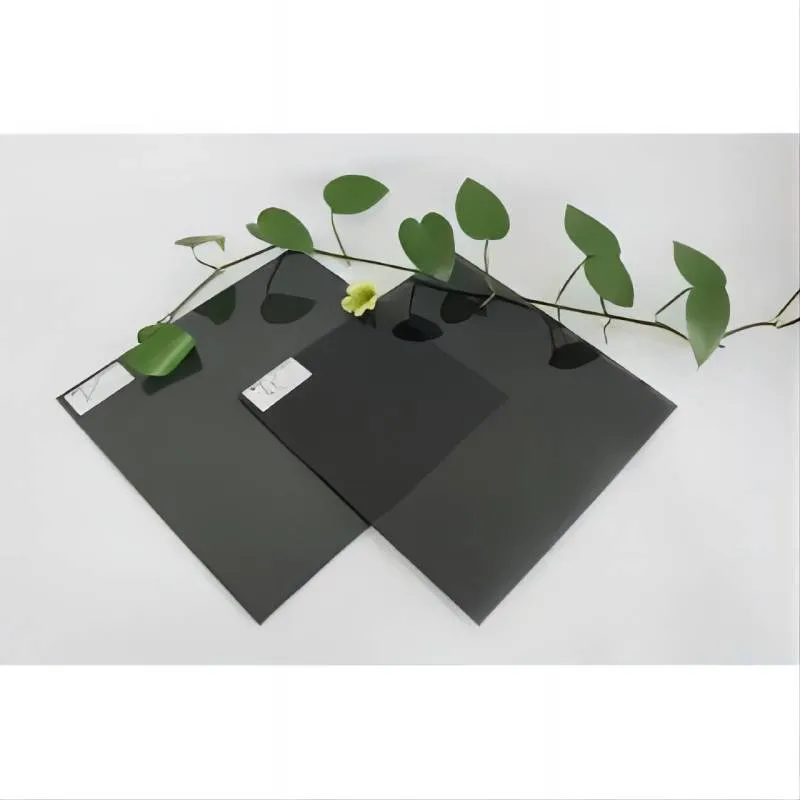Understanding Float Glass Definition and Applications
Float glass, an essential material in modern construction and manufacturing, plays a crucial role in various aspects of daily life and industrial applications. To grasp the significance of float glass, it is important to first understand its definition and the process by which it is manufactured.
Float glass is a type of flat glass produced by floating molten glass on a layer of molten tin. This unique process results in a smooth, even surface and uniform thickness, which are key attributes in glass products. The term float refers to the technique used during its production, which was first developed in the 1950s by Sir Alistair Pilkington and is also known as the Pilkington process. The process ensures that the glass maintains specific characteristics that make it highly desirable for a range of applications.
Understanding Float Glass Definition and Applications
One of the most significant features of float glass is its clarity and transparency. This characteristic makes it widely used in architectural applications, such as windows, facades, and doors. Architects and builders favor float glass for its ability to allow natural light into buildings while providing insulation and protection against external elements. In modern buildings, float glass can be treated with coatings to enhance its thermal efficiency and solar control, resulting in improved energy performance.
float glass meaning
In addition to architectural uses, float glass is prevalent in the automotive industry. It is used in the manufacturing of car windows, windshields, and mirrors due to its durability and lightweight properties. Enhanced safety features can also be integrated into float glass through processes like tempering and lamination, resulting in shatter-resistant products.
Furthermore, float glass finds application in the production of decorative items, mirrors, and furniture. Its aesthetic appeal and ability to be easily cut and shaped allow designers to create innovative designs for both functional and artistic purposes.
Despite its many advantages, the float glass industry faces challenges, particularly regarding its environmental impact. The production process is energy-intensive, and the disposal of glass waste can pose concerns. However, recycling initiatives are in place to mitigate these issues, as glass can be recycled indefinitely without losing its quality, making it a sustainable choice when properly managed.
In conclusion, float glass is a vital material that underscores the intersection of functionality, beauty, and sustainability in various industries. Its unique production process, alongside its diverse applications, not only shapes our physical environment but also enhances our quality of life. As technology and methodologies continue to evolve, the future of float glass holds promise for even greater innovations that prioritize efficiency and environmental responsibility.
 Afrikaans
Afrikaans  Albanian
Albanian  Amharic
Amharic  Arabic
Arabic  Armenian
Armenian  Azerbaijani
Azerbaijani  Basque
Basque  Belarusian
Belarusian  Bengali
Bengali  Bosnian
Bosnian  Bulgarian
Bulgarian  Catalan
Catalan  Cebuano
Cebuano  Corsican
Corsican  Croatian
Croatian  Czech
Czech  Danish
Danish  Dutch
Dutch  English
English  Esperanto
Esperanto  Estonian
Estonian  Finnish
Finnish  French
French  Frisian
Frisian  Galician
Galician  Georgian
Georgian  German
German  Greek
Greek  Gujarati
Gujarati  Haitian Creole
Haitian Creole  hausa
hausa  hawaiian
hawaiian  Hebrew
Hebrew  Hindi
Hindi  Miao
Miao  Hungarian
Hungarian  Icelandic
Icelandic  igbo
igbo  Indonesian
Indonesian  irish
irish  Italian
Italian  Japanese
Japanese  Javanese
Javanese  Kannada
Kannada  kazakh
kazakh  Khmer
Khmer  Rwandese
Rwandese  Korean
Korean  Kurdish
Kurdish  Kyrgyz
Kyrgyz  Lao
Lao  Latin
Latin  Latvian
Latvian  Lithuanian
Lithuanian  Luxembourgish
Luxembourgish  Macedonian
Macedonian  Malgashi
Malgashi  Malay
Malay  Malayalam
Malayalam  Maltese
Maltese  Maori
Maori  Marathi
Marathi  Mongolian
Mongolian  Myanmar
Myanmar  Nepali
Nepali  Norwegian
Norwegian  Norwegian
Norwegian  Occitan
Occitan  Pashto
Pashto  Persian
Persian  Polish
Polish  Portuguese
Portuguese  Punjabi
Punjabi  Romanian
Romanian  Russian
Russian  Samoan
Samoan  Scottish Gaelic
Scottish Gaelic  Serbian
Serbian  Sesotho
Sesotho  Shona
Shona  Sindhi
Sindhi  Sinhala
Sinhala  Slovak
Slovak  Slovenian
Slovenian  Somali
Somali  Spanish
Spanish  Sundanese
Sundanese  Swahili
Swahili  Swedish
Swedish  Tagalog
Tagalog  Tajik
Tajik  Tamil
Tamil  Tatar
Tatar  Telugu
Telugu  Thai
Thai  Turkish
Turkish  Turkmen
Turkmen  Ukrainian
Ukrainian  Urdu
Urdu  Uighur
Uighur  Uzbek
Uzbek  Vietnamese
Vietnamese  Welsh
Welsh  Bantu
Bantu  Yiddish
Yiddish  Yoruba
Yoruba  Zulu
Zulu 

